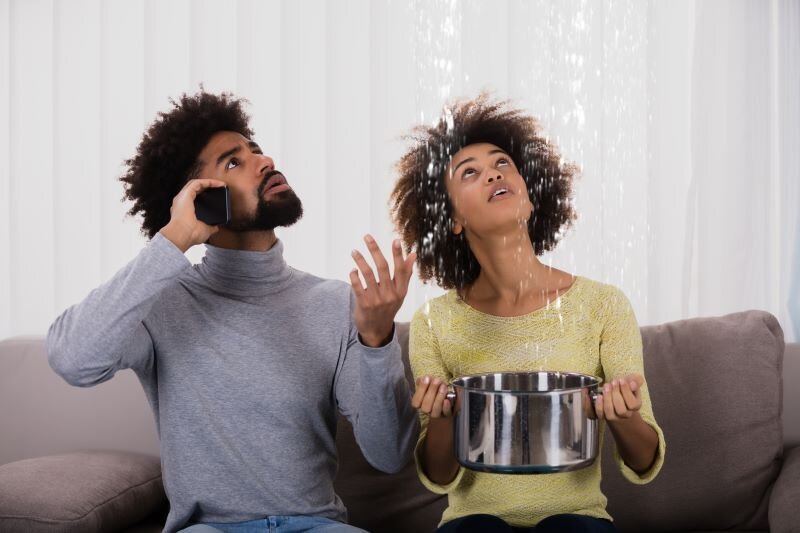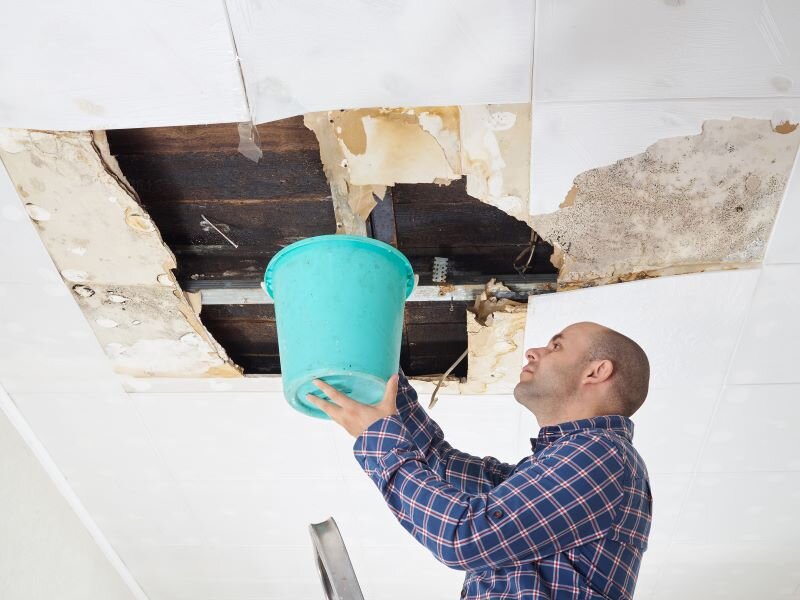
Water damage can be one of the most destructive and costly issues homeowners face. It can result from many causes, including flooding, burst pipes, leaks, and even natural disasters. It can lead to structural damage, mold growth, and health hazards if addressed after a period of time. To mitigate water damage, homeowners must take proactive steps to prevent it from occurring and to conduct water damage restoration quickly if it does.
Preventative measures can go a long way in mitigating water damage to your home. Regular maintenance of your plumbing system and roof can help prevent leaks, while proper drainage around your home can prevent flooding. A sump pump and backup generator can protect you during power outages and heavy rainstorms. Finally, inspecting and maintaining appliances that use water, such as washing machines and dishwashers, can prevent leaks and water damage.
In the event of water damage, swift action is critical to mitigate the damage and prevent further harm. Shutting off the main water supply can prevent further flood damage. Removing standing black water as quickly as possible is important, as it can cause structural damage and promote mold growth.
Water Damage Mitigation
Water damage mitigation involves minimizing or preventing the damage caused by water to a property, typically a home or a commercial building. This damage can result from various causes like floods, heavy rains, burst pipes, leaky roofs, or even simple human error. Water damage can heavily impact the structural integrity of a building, as well as pose health hazards due to mold and mildew growth.
The water mitigation process involves a series of steps aimed at minimizing the damage caused by water and restoring the property to its pre-damaged condition.
- Identify the water source and stop it from flowing.
- Remove the water from the property. This can be achieved using specialized equipment such as pumps, dehumidifiers, and air movers.
- Dry and dehumidify to prevent the growth of mold and other microorganisms that thrive in moist environments. Be sure all carpets, subflooring, and drywall are dried.
- Clean and disinfect to ensure that it is safe for habitation.
- Conduct water damage restoration to get your home back to normal.
Water damage mitigation is a critical process that can save property owners thousands of dollars in repair costs. Act quickly and engage professionals in water damage mitigation to prevent further damage and health hazards.
Tips for Mitigating Water Damage
Water damage is a concern for homeowners as it can cause damage to the structure of the house and lead to mold growth and other health hazards. Fortunately, there are several measures you can take to mitigate water damage in your home.
1. Inspect Your Plumbing Regularly
Plumbing issues such as leaks, burst pipes, and clogs are common culprits of water damage. Look for signs of leaks, such as damp spots or discoloration on walls or ceilings, and check for any strange smells. Call a licensed plumber to assess the situation and make any necessary repairs.
2. Install a Sump Pump
If you live in an area prone to flooding, installing a sump pump is a wise investment for water extraction. A commercial-grade sump pump is a device that is installed in the basement or crawlspace of your home and pumps water out when the water level rises above a certain point. This water removal can help prevent water damage and make cleanup much easier.
3. Monitor Your Water Bill
A sudden increase in your water bill can indicate a leak in your home. If you notice a spike in your water usage, it’s important to investigate the cause. Check your plumbing fixtures and pipes for leaks, and call a plumber if you suspect an issue.
4. Install Water Sensors
Water sensors are devices that detect the presence of water in your home and alert you before any severe damage occurs. These devices are placed near appliances such as washing machines, dishwashers, and water heaters, as well as in areas prone to flooding. The sensor will sound an alarm or notify your smartphone if water is detected.
5. Be Careful With Appliances
Appliances that use water, such as washing machines, dishwashers, and refrigerators, can be a source of water damage. To prevent leaks, inspect these appliances regularly for any signs of wear and tear. Replace any damaged hoses or connections, and avoid overloading washing machines and dishwashers.
6. Know Your Water Shut-Off Valve
In the event of a leak or burst pipe, knowing the location of your water shut-off valve can save you a lot of time and money. Make sure to locate this valve and learn how to shut off the water supply to your home in case of an emergency.
7. Restore
The restoration process and mold remediation can be an ordeal, but it is necessary if you want to get your home back to the way it was before the damage. Contact a restoration company for a quote to get your home to its former glory. It’s one of the most important steps when preparing your house for appraisal if you’re looking to sell after a flood.

How to Protect Your House From Water Damage
Mitigating damage from water in your home can be costly, as it can devastate your property’s structure and lead to costly repairs. Fortunately, you can take steps to prevent water damage and protect your home. That way, you’ll be best placed to use cash home buyers in Wisconsin to move elsewhere if that’s what you ultimately want.
1. Regularly Check for Leaks
Check for leaks under sinks, around toilets, and behind appliances like your washing machine and dishwasher. If you notice any leaks, fix the affected areas immediately.
2. Maintain Your Roof
Your roof is your home’s first line of defense against water damage, so it’s important to keep it well-maintained. Have your roof inspected regularly and repair any damage or leaks as soon as they’re discovered. Make sure your gutters are clean and in good condition to prevent water from pooling on your roof.
3. Insulate Pipes
Frozen pipes can burst and cause significant water damage, so insulating your pipes is important to prevent them from freezing. Use insulation sleeves or tape to wrap your pipes, particularly those exposed to cold air, such as those in your basement or crawl space.
4. Install Appliances Correctly
Appliances that use water, such as washing machines and dishwashers, can cause water damage if they leak or overflow. Follow the manufacturer’s instructions for installation and maintenance, and check for leaks regularly.
5. Flood Insurance
Many people who have lost everything in flooding events simply did not have an insurance company to fall back on. Prepare for all possibilities by purchasing insurance, which can be invaluable when you later recruit restoration services. Otherwise, you might not have the funds to repair your property so you can sell a house fast in Milwaukee.
Understanding Floodplains and Zones
Floodplains are low-lying areas adjacent to rivers, streams, and other bodies of water naturally prone to flooding. These areas are often rich in nutrients and provide various ecological benefits such as natural flood control, water purification, and habitat for various plant and animal species.
Flood zones are areas at risk of flooding during heavy rain events or when bodies of water overflow their banks. These zones are typically classified based on the likelihood and severity of flooding. They are essential for land use planning, building codes, and determining flood insurance requirements.
Understanding floodplains and flood zones is crucial for communities to mitigate the risks associated with flooding. By understanding the natural cycles of flooding and the potential impacts on infrastructure, homes, and businesses, communities can take steps to minimize damage and protect lives and property.
Some of the steps that communities can take to reduce the impact of flooding include avoiding building in flood-prone areas, implementing zoning regulations that restrict development in high-risk areas, creating flood control measures such as levees and flood walls, and adopting emergency service and response plans to quickly and efficiently evacuate residents in the event of a flood.
Is Your House Flood Safe?
Floods are natural disasters that can wreak havoc on your home, causing damage to property and putting your family’s safety at risk. You should take several precautions to make your home safe from expensive damage repair.
Start by identifying flood-prone areas in your home and taking measures to prevent water from entering those areas. Install flood barriers or sandbags around your home’s perimeter to redirect water away from the building.
You can also elevate critical systems and appliances, such as electrical boxes and HVAC units, to reduce the risk of damage. It’s important to have a plan, including an evacuation route, in a flood emergency. Lastly, ensure that you have flood insurance to protect your home and belongings.
Conclusion
In conclusion, mitigating water damage to your home requires a proactive approach and regular maintenance. By identifying potential sources of water damage, implementing preventative measures such as sealing cracks and installing proper drainage systems, and regularly inspecting and maintaining plumbing and appliances, you can significantly reduce the risk of water damage to your home.
In a water emergency, it is crucial to act quickly and effectively to minimize the extent of the damage. Following these tips, you can protect your home from water damage and enjoy greater peace of mind.
Are you thinking about selling a flood damaged house in Wisconsin? At CB Home Solutions, we buy houses Oshkosh residents no longer want. You’re guaranteed a fair-value cash offer to help you sell fast.
